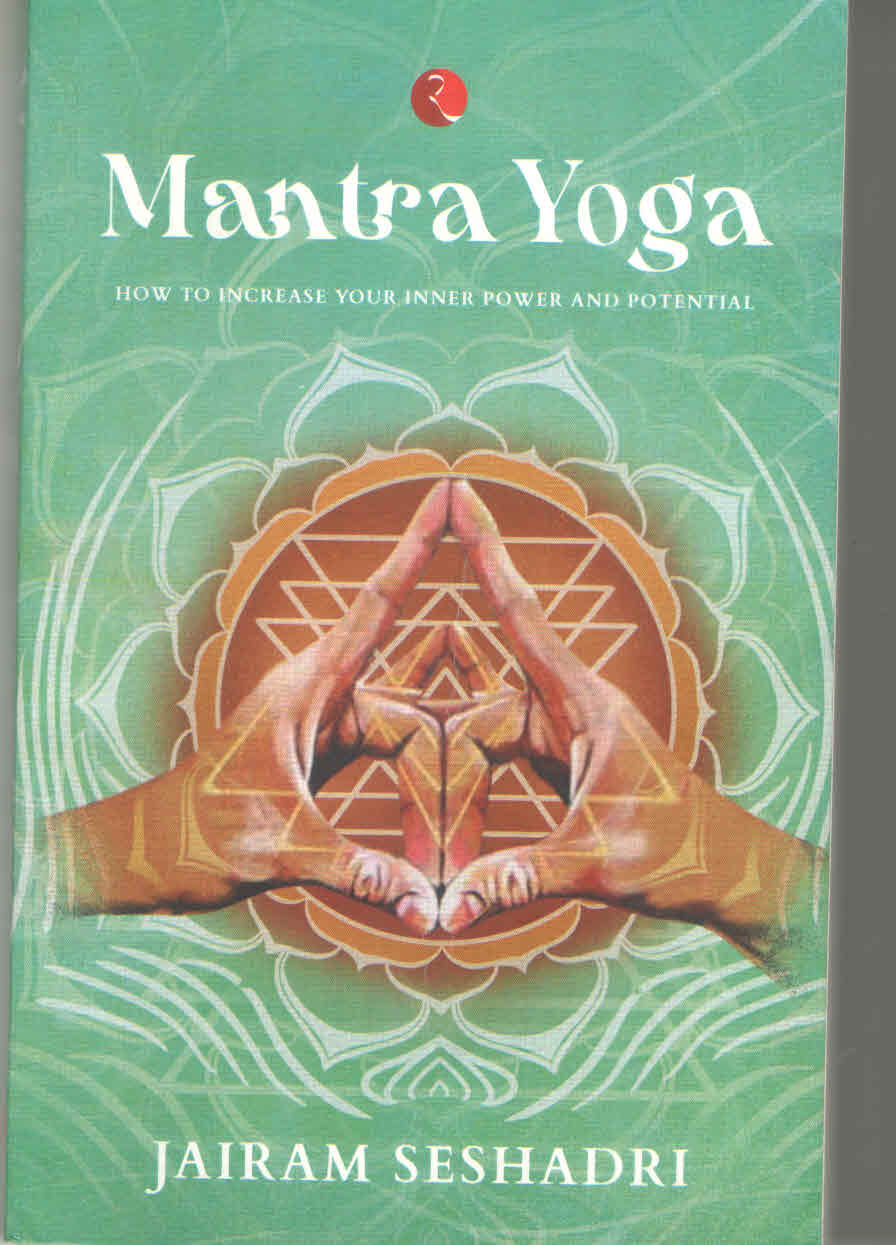Apr 03, 2025
Apr 03, 2025
by Pankajam K
Mantra Yoga – How to Increase your Inner Power and Potential
by Jairam Seshadri, Rupa Publications, 2021, pp.150, Rs.295
 Jairam Seshadri, who practices Mantra Yoga for more than three decades proves through his book ‘Mantra Yoga – How to Increase Your Inner Power and Potential’ that there is a rational basis for chanting mantras and that the path outlined in Mantra Yoga helps one to attain their higher states. Mantra Yoga means the union of our present state of mind with our higher states. It helps us to spend quality time with ourselves in peace. In today’s busy world this is of utmost importance.
Jairam Seshadri, who practices Mantra Yoga for more than three decades proves through his book ‘Mantra Yoga – How to Increase Your Inner Power and Potential’ that there is a rational basis for chanting mantras and that the path outlined in Mantra Yoga helps one to attain their higher states. Mantra Yoga means the union of our present state of mind with our higher states. It helps us to spend quality time with ourselves in peace. In today’s busy world this is of utmost importance.
I read this wonderful book which is full of wisdom and thought I share those bits of wisdom that I could gather with prospective readers.
The author explains the subject in a simple language. There are four main paths to mantra yoga to attain enlightenment or Shanti viz., Karma Yoga, Bhakti Yoga, Raja Yoga and Jnana Yoga, all distinct, yet inextricably intertwined. Every religion has mantras, which are sacred and chanted with devotion. Though pleasure and pain are two sides of the coin, human beings are not born to be slaves to our own desires, but to master our internal and external worlds. He reiterates that every attribute exists only because its opposite exists. We can’t have one without the other, or to be precise avoid pain and seek pleasure forever. One more thing relevant here is that these states of minds are required to be relative to the state of others. Jairam states with reasons that Mantra Yoga deals exclusively with states that we can experience in the here and now.
We achieve Shanti overcoming hurdles is a state of mind and that is when one can look at pleasure and pain with equal calmness and fortitude. Shanti gives us faith, but it should be reasoned faith, not blind faith. In this process doubts are welcome, which prompts our intellect to comprehend what is real, what is unreal
Since our minds are finite, to define the infinite would be hard because God can’t be limited to our senses. We may be thinking that we are wise. Not really. When we realize that our senses are limited, we will be trying to achieve enlightenment or Shanti. The fact is that ‘when the full realization of how little we know dawns, we reach the threshold of wisdom’.
The author goes further to explain the constituents of Mantra, its attributes, its, presiding deity, its divine energy, Bija-Akshara, the effects of its vibrations all with reasoning, rationale and scientific base and also quoting examples from discoveries.
Jairam also delves into the personality constituents extensively viz., Sattva, Rajas and Tamas gunas through the lens of desire, their nature, character attributes, etc., but one thing we should understand is that any activity we carry out has varying and intermingling degrees of these three gunas and this he explains with illustrative examples.
I am confident that mantras induce positive thoughts in us. It is not exclusive to the East or the West. Mantra Yoga, which is true and eternal is not restricted to any one religion, nation or identities because the philosophy behind it transcends all boundaries. It follows the path of love and devotion.
The author explains the various methods of chanting such as Mansika Japa, Vaikhari Japa, Upasmu Japa, Likhita Japa etc., but the regularity and punctuality are important.
He has also suggested the way these should be done.
I appreciate the author Mr. Jairam Seshadri for his sensible efforts to popularize Mantra Yoga, which is an excellent tool to bring enlightenment and shanti, especially in these turbulent times and would recommend this book to the readers.
14-Aug-2021
More by : Pankajam K